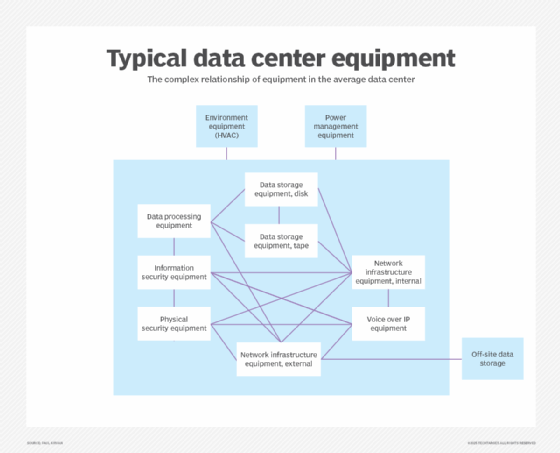
Getty Images
Examine the benefits of data center consolidation
Many data centers have too many assets. Data center consolidation can help organizations make better use of assets, cut costs, and improve security and compliance.
A lot like when someone looks in their kitchen cabinets and they have too much glassware, data center managers may find themselves with more assets and infrastructure than they need to keep their organization afloat.
That's where they can benefit from consolidation.
Data center consolidation is a process that organizations can take to make their facilities and equipment more efficient and use fewer resources to achieve the same technology goals. This can take the form of consolidating servers, downsizing or consolidating data center sites.
When to consider consolidation
Organizations that find themselves with an overly complicated or costly data center should be the first to consider consolidation. Consolidation can cut costs, simplify infrastructure and streamline operations.
Consolidation enables more efficient IT and data center operations. For example, some organizations may underuse some data center assets, such as servers.
Benefits of data center consolidation
An organization that doesn't use a lot of assets at their full capacity can benefit from consolidating. Benefits of data center consolidation include simplified risk management, easier compliance with regulatory measures and easier disaster recovery (DR) processes.
Simplified control and infrastructure management
Businesses are managing huge amounts of data, and that data travels to more places than it ever has before.
With fewer assets to manage, it is easier for data center admins and IT departments to control, optimize and manage the organization's infrastructure. Fewer facilities and equipment can make it easier for IT staff to understand and manage data flow patterns and network mapping in a consolidated environment.

Additionally, if the consolidation includes reducing the number of data center facilities, data center management and IT staff will have a smaller number of facilities to oversee.
Cost reductions
Data center consolidation can lead to millions in data center cost reductions over the long term. Organizations that consolidate their data centers can drive their maintenance costs down, eliminate or scale down redundant systems, and preserve capital for other areas.
Initial costs of consolidating systems can be expensive, but organizations can benefit from a cost perspective in the long run. Organizations can save on Opex in areas like property costs, data center staffing, asset management and energy costs through consolidation and use more of their budgets for other initiatives.
Easier risk and security management
Data center consolidation can enable organizations to mitigate much of the risk of outages, downtime and security issues. Organizations can reduce the attack surfaces bad actors can potentially exploit, which makes security management easier.
Additionally, a key benefit of data center consolidation is the opportunity for organizations to identify and fix issues, including misconfigured assets, outdated devices and firmware vulnerabilities, during the consolidation process. Consolidating is an opportunity for organizations to find ways to strengthen their security posture and replace or update systems that are susceptible to security breaches.
Energy efficiency and environmental benefits
Data centers famously use a lot of energy. Through consolidation, organizations can introduce more energy-efficient assets to their data centers and remove older, less efficient ones to lower their power usage effectiveness.
More efficient equipment usually needs less power and less cooling costs to run, which improves the environmental impact of data center operations. Additionally, organizations can use consolidation to identify inadequate, underused or unnecessary infrastructure and retire or recycle those assets.
Improved compliance
Organizations must follow a variety of security and compliance standards with their data centers, including ISO standards, HIPAA, GDPR and Payment Card Industry Data Security Standard, for example. When more data centers and more systems are involved, it can be difficult to ensure each system is compliant across all the relevant standards. With fewer data centers and teams, it is far easier to ensure processes and data center assets are designed to achieve compliance with regulations.
Easier disaster recovery
It is also far easier to craft and implement DR plans if fewer systems or data centers are involved. If a disaster occurs and an organization must use a DR plan, responding to the crisis will be easier. Reduce the amount of assets under management and the amount of sites to include in the DR plan to reduce any risks involved from failures.








